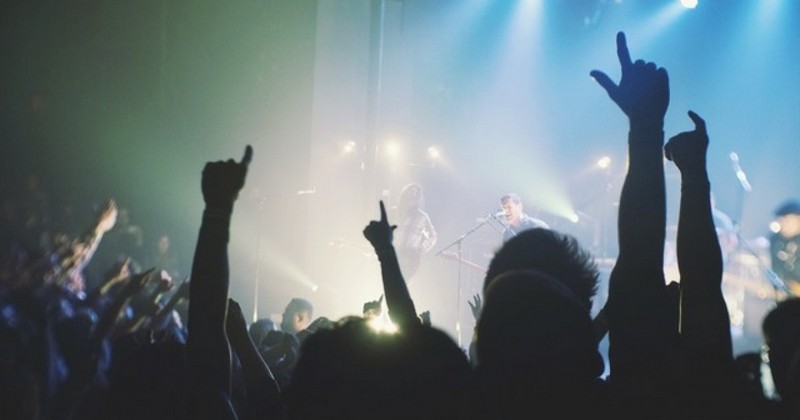Relationships in nightlife: cultural analysis from a gender perspective.

Discotheques, pubs, bars... sexist environments?
Our way of understanding relationships has a large learned component.. In this case, I will focus on the social dynamics that occur in relationships in nightlife venues (bars, discos, pubs...) in Western countries.
Learning through culture
Enculturation processes define in the social character (shared among several majority social groups) what it is to be an adult, its significance, and all the imperatives it entails. They are a series of patterns socially accepted and valued in matchmaking situations by people who share this cultural paradigm, among others. One of these desirable characteristics is to have a well-formed and stable personality over time.
According to my experience and the role of observer used in nightlife venues, I detect an expression that is repeated mostly among people of the male gender, without exempting the other genders.without exempting the other genders. How we see people and interpret them, has a cultural component, and according to the prevailing culture determines what is beautiful, acceptable and desirable and what is not.
Monogamy: a starting point for cognitive dissonance
Within Western culture, the belief in monogamous relationships is established, and different ways of conceiving personal and affective relationships are rejected. The expression when observing people of female gender "I like them all", causes a conceptual incongruence between the absorbed culture and the hedonic needs of the moment, creates a homogenization of the perception of people and gives the starting point to the construction of gender, with the explanation that when one has a belief, it is really the belief that possesses the person, regardless of the reasoning that follows this expression.
Essentialist positions are demolished by this statement, since there is no such thing as a reality, but a constructed one. And that construction makes us see reality as we see it, through learning and enculturation processes.
Traditional culture and gender roles in nightclubs
This expression responds to a pattern of traditional culture, which is characterized by a homogeneous vision (beliefs, who is in and who is out) and are stable over time. In addition, Western culture is constantly reformulated under the same parameters but with different aesthetics, so it may give the impression that gender roles and relational attitudes are different, but they are really covert strategies. An example of this can be machismo dressed up and perpetuated as romantic love. We change the use of language, but structurally it contains a meaning equal to the previous reformulation.
This type of traditional culture is also characterized by patterns with little variability, which translates into a higher degree of imperativeness. This degree, as the word says, has different levels in terms of adverse reaction to situations that should be mandatory for people immersed in that culture. Cognitive dissonances in terms of modernist versus postmodernist culture shock, causes internal conflicts, and following the parameters of a traditional culture, also creates guilt in the other.
Cultural influence also affects the conclusions we draw from the facts.Therefore, the interlocutor can be interpreted as someone who does not understand or rejects you, depending on whether the sender complies with the prevailing canons, focusing the responsibility for the negative on the other and justifying one's own actions as correct. The other is the one who is to blame, thus invisibilizing, through an excessive psychologizationthe structural and cultural component of the behavior. In this type of situation, added to the fact that the environmental characteristics are not ideal for a communicative process, an intersubjective negotiation of meanings that allows understanding the discourses of both parties beyond the subjective projections and interpretations of the other, seen from the perspective of cultural imperatives and what should be, becomes especially difficult.
Explaining the contradiction
On the one hand we have cultural imperatives, and on the other hand desire for other people, consummated or not. Why might this attitude be due?
The canons of beauty on gender roles mark the appropriate behaviors for each gender, in addition to their physical appearance. Environments where it is not easy to maintain a conversation, added to the visual nature of human beings, make sight the sense that receives the most attentional resources and, therefore, the most attention, se becomes the first tool for making value judgments.. The genderunderstood as a social construction and learned form, makes us look at people conceived as beautiful according to these canons. The cultural canons, from a Western point of view, understand gender as man and woman only, but from the postmodernist vision, new ways of understanding gender, sexuality and interpersonal relationships beyond the pre-established ones are included.
Women as mere objects of desire
Nightlife venues are governed by certain aesthetic norms for access, like any business, they seek to project an image and, in addition, they seek free publicity from like-minded people. Without leaving aside the passive role that is intended to give women as objects of consumption and advertising, we can see how both men and women respond to certain dress patterns for these occasions.
If people who comply with these cultural canons of beauty have access to a fashionable place, and access is restricted to those who do not, it is easy to understand that nightlife venues become a scenario of enculturation where the roles and behaviors socially accepted by the prevailing culture, in this case, of a modernist type, are learned. socially accepted by the prevailing culture, in this case, of the modernist and traditional type. The only difference is aesthetics, and having learned what is desirable for each gender role, it is understood that one can feel more physical attraction for different people in the same place, in addition to choosing the clothing and behaviors supposedly more adaptive for each social situation within the nightclubs.
(Updated at Apr 14 / 2024)